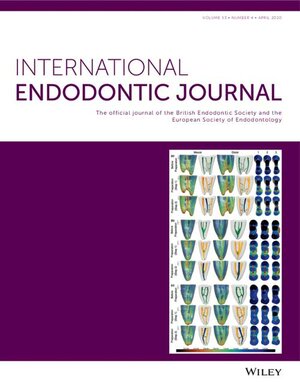Pulp sensibility responses following complete and partial pulpotomy in mature permanent molars with carious pulpal exposure and symptomatic irreversible pulpitis: Analysis of pooled data from three randomized clinical trials
Abstract
Aim
The objective of pulpotomy is to preserve the pulp vitality. However, the assessment of pulpal status following pulpotomy is often overlooked. This retrospective analysis aimed to compare the pulp responses to EPT (Electric pulp test) and cold test in mature permanent molars that have undergone either complete pulpotomy (CP) or partial pulpotomy (PP) for managing carious pulpal exposure and symptomatic irreversible pulpitis (SIP) and completed 12 months follow-up.
Methodology
This retrospective analysis pooled data from three randomized clinical trials of pulpotomy (one using CP and two using PP) conducted in the Department of Conservative Dentistry and Endodontics of the Postgraduate Institute of Dental Sciences, Rohtak, from December 2020 to May 2024. The present study included a total of 220 cariously exposed mature permanent molars with SIP, that underwent either CP (n = 45) or PP (n = 175) using ProRoot Mineral Trioxide Aggregate, and were followed-up for 12 months. The teeth were evaluated for outcomes (clinical and radiographic), and pulp sensibility responses to EPT and the cold test, both individually and collectively as positive response to either test. Pulp sensibility responses were further analysed following teeth distribution considering variables like age, gender, number of tooth surfaces restored, preoperative pain intensity and hard tissue formation. Statistical analysis was performed using the Chi-squared test, Fisher's exact test and Mann–Whitney U-test, with significance at p < .05.
Results
At 12 months follow-up, 209 of 220 teeth analysed had a successful pulpotomy outcome. Amongst these, PP-treated teeth responded more predictably to EPT and cold test as compared to CP-treated teeth. However, the difference was significant with EPT analysis only (p = .001). The proportion of teeth with a positive response was significantly higher in both the groups, when considering a combined positive response to either EPT or cold test, compared to the positive response to each test alone (p < .001). None of the included variables influenced the pulp sensibility responses in either group (p > .05).
Conclusions
PP-treated teeth responded more predictably to EPT and cold test than CP-treated teeth. Future studies must consider positive response to either EPT or the cold test collectively, whilst assessing the pulpal status following CP and PP.

 求助内容:
求助内容: 应助结果提醒方式:
应助结果提醒方式:


